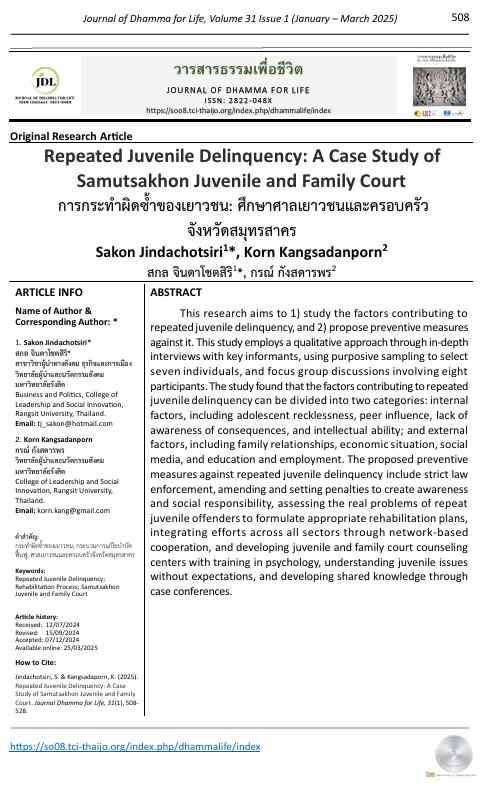Repeated Juvenile Delinquency: A Case Study of Samutsakhon Juvenile and Family Court
Main Article Content
Abstract
This research aims to 1) study the factors contributing to repeated juvenile delinquency, and 2) propose preventive measures against it. This study employs a qualitative approach through in-depth interviews with key informants, using purposive sampling to select seven individuals, and focus group discussions involving eight participants. The study found that the factors contributing to repeated juvenile delinquency can be divided into two categories: internal factors, including adolescent recklessness, peer influence, lack of awareness of consequences, and intellectual ability; and external factors, including family relationships, economic situation, social media, and education and employment. The proposed preventive measures against repeated juvenile delinquency include strict law enforcement, amending and setting penalties to create awareness and social responsibility, assessing the real problems of repeat juvenile offenders to formulate appropriate rehabilitation plans, integrating efforts across all sectors through network-based cooperation, and developing juvenile and family court counseling centers with training in psychology, understanding juvenile issues without expectations, and developing shared knowledge through case conferences.

